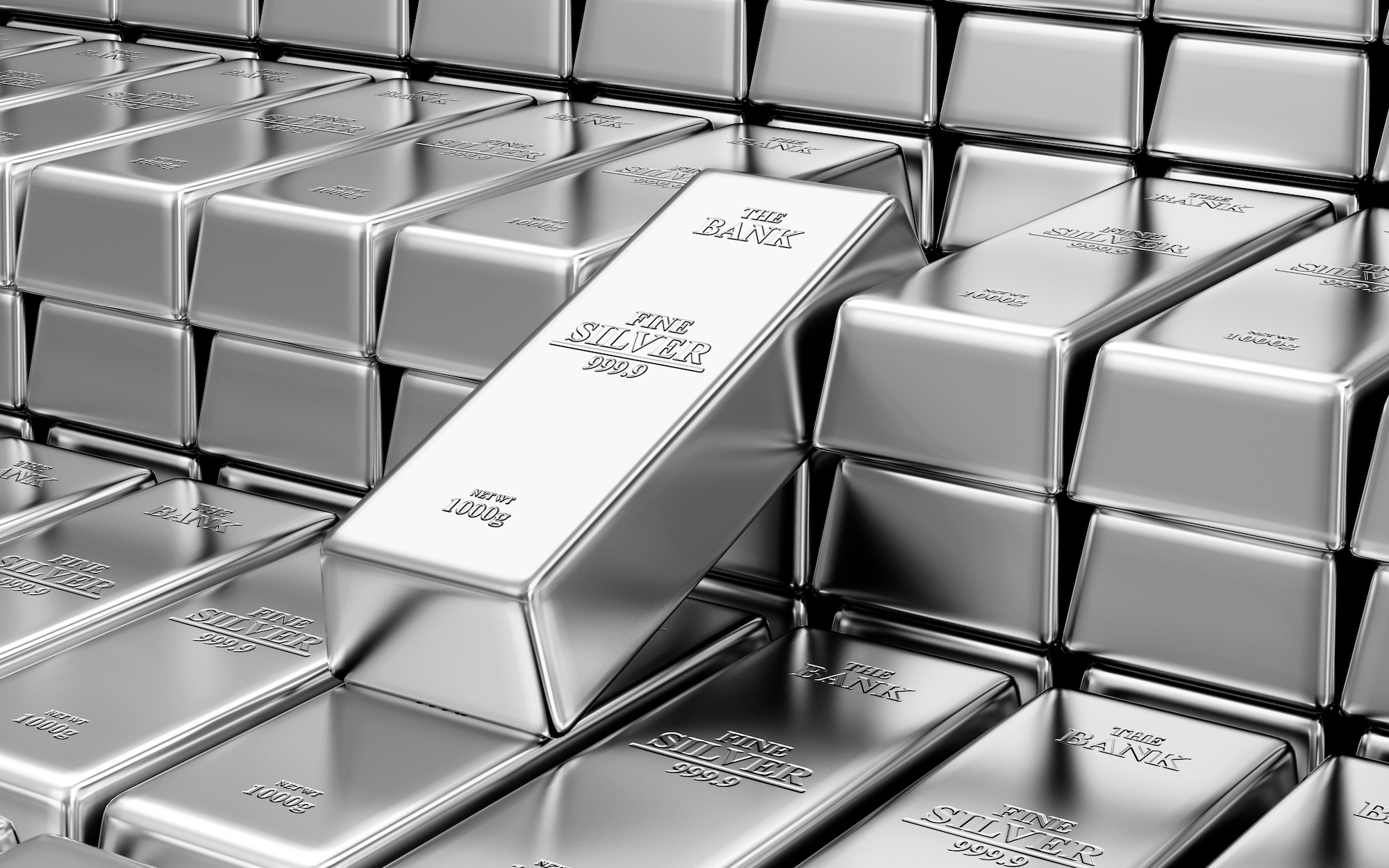The general consensus among market watchers, researchers and precious metals experts is that the long-term forecast for silver is positive. Although no asset is without downside risk, the case for silver is supported by heavy industrial use as well as its strategic importance as a currency hedge during times of uncertainty. However, the strength of the dollar will play an important role in silver’s performance.
Exposure to silver, in coins, bars, or even stocks can be a great alternative to gold investment. Much like other precious metals, silver shares a few things in common with gold. It is relatively rare, expensive to mine, forged into fashion items with immense appeal, and used in various different industries. However, similarities end when it comes to value and price. Silver is arguably now a much better investment than gold and is also much less ‘in-demand’ than gold. Indeed, one major upside to silver is that it does not get as much attention from investors when geo-political events spark anxiety. That is to say: silver is not yet hoarded by investors nearly as much as gold.
Tyler Gallagher, CEO and Founder of Regal Assets wrote in his ‘Forbes Forecast for Silver in 2020 – 2021’ Council Post, “This has been a tumultuous year for investors, with Brexit, negative bond yields, a global trade war, an oil price crash and, of course, a worldwide pandemic that’s ushered in what’s expected to be the worst recession since the Great Depression. The question, then, is whether our money can be safely invested anywhere.
“Fortunately, many experts are bullish about precious metals. Although the price of gold has risen roughly USD400 per ounce in the past year, some analysts suggest that silver may be the better buy in the medium- and long-term,” says Gallagher.
Is silver susceptible to price suppression?
In August, pandemic worries coupled with a weakening US dollar sent gold prices skyrocketing to over USD2,000 an ounce for the first time in history. Silver has also rallied. For the first time since 2013, silver prices soared to USD28 an ounce in August – a 140% increase from its 2020 low.
Gallagher says that it is worth noting that neither the US federal government nor the Federal Reserve system can assert significant control over the price of silver. “In 2019, the US accounted for an estimated 3.6% of global silver production (980 metric tons), compared to Mexico and Peru, which produced 6,300 and 3,800 metric tons, respectively. Therefore, the price of silver is ultimately beholden to global market forces rather than domestic price manipulation,” notes Gallagher.
Let’s look at another few unique features that make silver a worthwhile investment above-and-beyond gold:
- When the economy is tanking and inflation is high, investors often rush to gold. Silver is also viewed as a safe haven investment, though it gets a lot less hype.
- Both precious metals have been sought after throughout history, so they’re appealing when stocks and currencies are losing value.
- Even in good times, many investors keep a small percentage of their assets invested in gold or silver as a portfolio diversification strategy.
Silver and industry
More than half of the demand for silver is driven by its countless industrial uses, and what is particularly noteworthy about silver’s industrial usage is that it’s prominent in the production of solar panels and batteries, which bodes well for the metal’s long-term price. The worldwide market for solar energy was expected to rise in value from USD52-billion in 2018 to USD223-billion by 2026.
But, because it’s so vital to industrial activity, demand for silver tends to rise and fall with the overall economy. When production picks up, silver prices are likely to increase. If it slows, silver often tumbles.
Silver is more volatile than gold
While short-term fluctuations in gold prices get a lot of attention, gold is relatively stable as a long-term investment. The annualised volatility of gold was only slightly higher than the annualised volatility of the S&P 500 during the 30-year period between 1989 and 2019.
The silver market’s small size relative to the gold market makes it susceptible to wild price swings.
While silver is mined at eight times the rate of gold, it is important to remember that gold is currently over 70 times more valuable than silver on an ounce-for-ounce basis, so the overall silver market is worth just a fraction of the gold market.
Adding to the volatility: More than 70% of the silver supply is produced as a by-product of mining for other metals, like copper and gold, which makes the silver supply less responsive to changes in demand.
Because of silver’s volatility, it may be more appealing than gold if you’re seeking to speculate on short-term fluctuations. But as a long-term hedge, gold is clearly more attractive.
Key factors that could influence the price of silver in the short term
In an article forecasting the price of silver in 2020, Capital.com’s Valerie Medleva mentioned that silver tends to perform poorly when the US dollar is strong. The article went on to note that in Q4 2018, the price of silver fell 14% when the US dollar performed well.
Although the US dollar is currently strong, the Fed has recently cut interest rates to effectively zero, which could weaken the dollar, so it remains to be seen how this will impact the price of silver through the year. A strong dollar generally signals a weak silver price, and though there are exceptions, such as we saw in 2018, high interest rates tend to mean higher silver prices. In other words, if the dollar weakens, we could have two competing forces pushing the price of silver up and down simultaneously.
Regarding supply, Core’s research concludes that the global supply of silver is fundamentally oversupplied but remains attractive to investors as a gold proxy. Silver can play an important role as a currency hedge, and upside growth is expected due to modest increased industrial demand. With respect to prices, Core believes that prices in 2020 is not conclusive. Possible outcomes range from USD15-USD23 per ounce, depending on gold’s performance and demand drivers. We believe that USD17.50-USD21 per ounce is the fair, market-aligned range for silver in the year ahead.
And according to technical analysts at FX Empire, silver is trending to the upside as price pullbacks throughout April have been met with quick buys from investors looking to fill their pockets with the white metal. They note a critical resistance point at USD15.50 per ounce. If silver settles above that mark, that will open the path for it stabilizing around the USD16.50 level seen before the crisis.
In short, silver is an alternative investment that’s a relatively safe option in a highly volatile market. Many analysts are optimistic about silver prices in the short and medium term. Regardless of how silver performs in the months ahead, the metal remains a strategic hold for many investors looking to minimise risk, diversify their portfolio and safeguard their wealth during times of heightened volatility.






